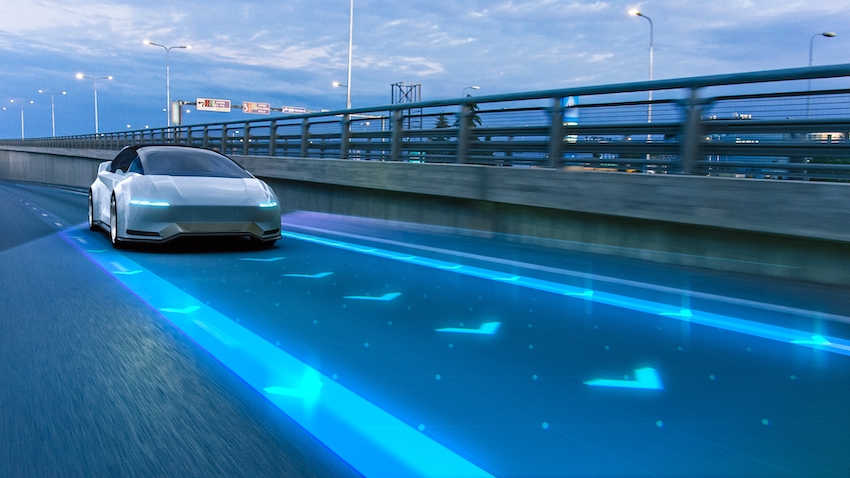
Safe or Sorry? Does Technology Really Prevent Accidents or Cause More?
You’ve seen the ads. Cars that can park themselves, brake automatically, and even self-change lanes. It sounds very futuristic, right?
Technology has become heavily ingrained in our lives, promising to make things safer. Modern vehicles now come preinstalled with advanced safety features designed to mitigate accidents. From automatic emergency braking to lane-keeping assistance, these measures aim to reduce human error. But is all this tech really making our roads safer?
This topic is increasingly relevant for the general population as our daily lives become more intertwined with various technological solutions. So, let’s dive in.
How Technology is Supposed to Prevent Accidents?
New cars come packed with features that promise to keep you safe. Automatic emergency braking, lane departure warnings, and adaptive cruise control are now the norm.
Advanced Driver-Assistance Systems (ADAS) are among the most significant technological advancements in road safety. These systems include features like adaptive cruise control and lane-keeping assistance. The former smartly controls the vehicle’s speed to keep a safe distance from other cars, whereas the latter helps drivers stay in their lanes.
According to Forbes, these technologies reduce certain types of accidents, particularly those caused by driver inattention or fatigue. Data shows that vehicles equipped with blind-spot monitoring have 14% lower crash rates than those who don’t have any. It also suggests that if every automobile sold since 2015 had blind-spot monitoring, it would’ve prevented 50,000 accidents and over 15,000 accident injuries.
Furthermore, another study states that combining vehicle crash-preventative systems can reduce accident frequency by over 3.2%. Similarly, navigation apps like Google’s Waze now warn drivers of roads prone to accidents, aiming to improve overall road safety. By providing historical crash data about accident-prone areas, these apps empower drivers to make more informed decisions and potentially avoid hazardous situations.
CNBC News states that artificial intelligence analyzes the data, including road characteristics, everyday traffic volume, elevation, and road type, before creating a report. However, it’s important to consider whether drivers might become too reliant on these technologies. Could overconfidence in these systems lead to new risks on the road?
The Unintended Consequences: Are We Too Reliant on Technology?
While technology promises to enhance safety, there’s a growing concern that drivers may rely too heavily on it. When drivers assume technology will handle everything, they may become less attentive. This over-reliance can lead to dangerous situations, especially if the technology fails.
The Verge reports that truck drivers who use automated driving technology have slower reaction times. Another report says that automation is making commercial pilots less skilled. There have been cases where Tesla’s self-driving technology, intended to prevent accidents, has contributed to them.
For instance, Craig Doty II revealed that his Tesla’s Full-Self Driving mode failed to detect a moving train, resulting in a tragic accident. Video evidence further revealed that the car didn’t slow down, forcing Doty to stop the car manually. Another incident occurred in November 2022 when a Tesla in Full Self-Driving mode erratically stalled on a busy highway.
Yahoo notes that this accident resulted in an eight-car pileup. Such incidents trigger questions about over-reliance on technology and the need for human supervision. If current technology can’t detect a large, high-risk object (a moving train), you can’t expect it to identify small, fast-moving entities like debris.
For instance, just last year, a 21-year-old woman in St. Louis County was killed after flying debris from another crash pierced her windshield. In such cases, even the most advanced systems might fail as they can’t account for sudden, unpredictable events. When such accidents occur, TorHoerman Law suggests having the necessary legal support.
In our case, a car accident lawyer in St. Louis would be familiar with the unique challenges of local roads and highways. This includes accident-prone areas. They can help victims or their families with the legalities when technology fails to prevent such unforeseen incidents. Moreover, they also fight for fair compensation and hold the responsible parties accountable.
Balancing the Risks and Benefits of Technology in Accident Prevention
Technology can only do so much to prevent accidents—human behavior remains a critical factor. Even with the best safety features, accidents can still occur if the drivers are distracted, impaired, or not 100% engaged. Technology is meant to complement, not replace, the driver.
But, when drivers overly depend on these systems, the risk of accidents may increase. Moreover, current ADAS technologies have limitations. They perform impressively in standard driving conditions but can struggle in complex situations, such as heavy traffic or adverse weather. For example, while adaptive cruise control works effectively on highways, it may not react quickly enough in sudden stop-and-go traffic, leading to rear-end collisions.
Proper training, education, and a clear understanding of the limitations of these features are crucial to maximizing their safety benefits. While these advancements are promising, they remind us that technology isn’t foolproof.
The Future of Accident Prevention
While technology can augment safety, it should not replace human judgment and responsibility. The future of accident prevention lies in combining advanced technology with responsible human oversight. The Verge emphasizes that drivers must remain vigilant and engaged, even with advanced safety features. An overreliance on technology can lead to complacency and a false sense of security, potentially undermining the safety benefits it aims to provide.
Emerging technologies like AI-enhanced driving systems and vehicle-to-vehicle communication offer great potential to reduce accidents. These systems could enable cars to communicate with each other and with infrastructure, predicting and preventing potential collisions before they occur.
However, as we move forward, it’s crucial to remember that technology should complement, not supersede, human decision-making. Drivers must remain engaged and alert, using technology as a tool rather than a crutch. Consumer Reports highlights the importance of driver education and awareness in utilizing new car technologies effectively. For instance, frontover prevention technology, which alerts drivers to obstacles directly in front of their vehicles, can be life-saving if used correctly.
Congress is working on the ‘STOP Frontovers Act’ to minimize frontover accidents. These accidents primarily involve children aged 6 or under as victims.
People Also Ask
Q1. What Are the Newest Car Safety Technologies to Look Out For?
Emerging technologies include AI-powered predictive collision detection, augmented reality displays for enhanced awareness, and advanced pedestrian detection systems. Vehicle-to-everything (V2X) communication is also on the horizon, allowing cars to “talk” to infrastructure and other vehicles for improved safety.
Q2. How Do Self-Driving Cars Compare to Human Drivers in Terms of Safety?
Currently, self-driving cars have mixed safety records. While they don’t get distracted or tired like humans, they can struggle with complex scenarios. As technology improves, they may become safer than human drivers in certain conditions. However, widespread adoption and perfection are still years away.
Q3. How Effective Are Collision Avoidance Systems in Preventing Accidents?
Collision avoidance systems can reduce rear-end crashes by 14–27%. However, their effectiveness varies based on driving conditions and user understanding. While they significantly improve safety, they’re not foolproof and work best when drivers remain alert and use them as intended.
Technology has undoubtedly made our roads safer, but it has its drawbacks. While advanced safety features can prevent many accidents, they also introduce new risks, particularly when drivers rely too heavily on them.
A balanced approach combining technological innovation with active driver engagement is essential for safer roads. As these technologies evolve, it’s important to stay informed and cautious, ensuring that safety remains the top priority.
By understanding both the benefits and limitations of these systems, we can make smarter decisions and help create a safer driving environment for everyone.





